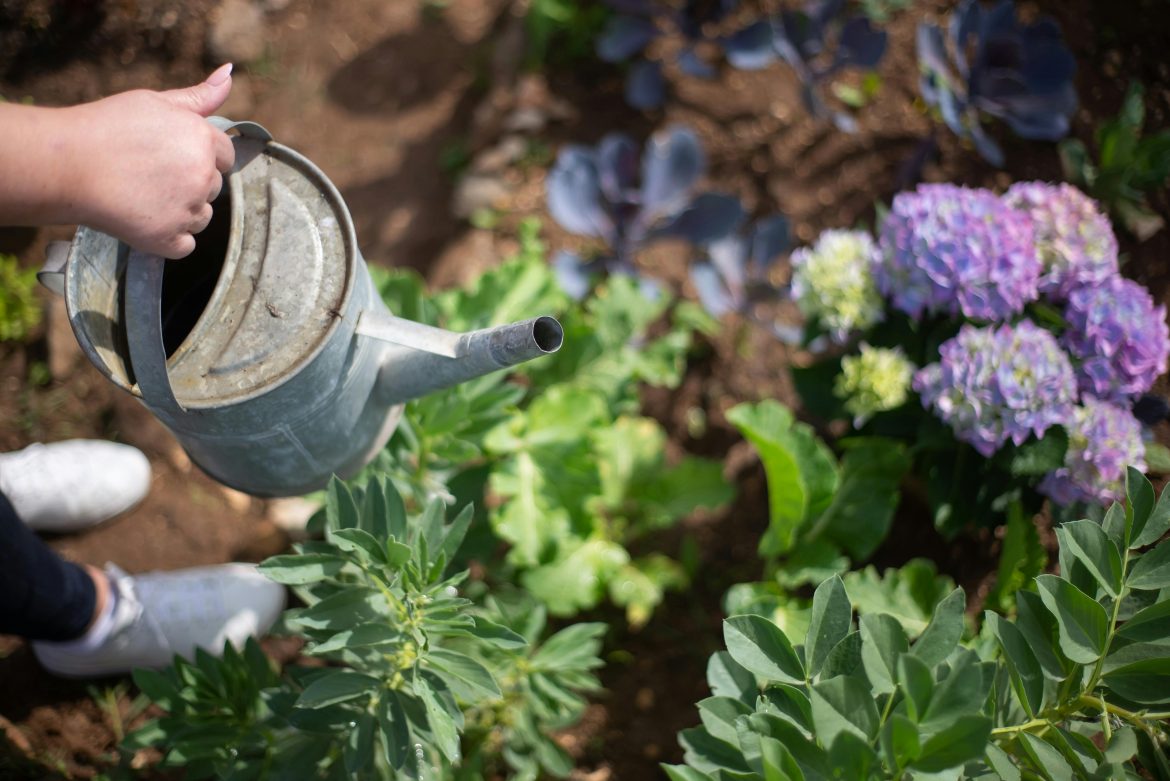Evenings in the garden can feel like the perfect time to unwind — the air is cooler, the light is golden, and everything looks just a little more serene. But when it comes to watering, timing really does matter. While a late-day top-up might seem harmless, watering your garden at night could be doing more harm than good.
Here’s why early mornings are your best bet, and what you risk when you leave watering until after sunset.
ALSO SEE: How to keep your plants alive when you’re on holiday
1. Damp leaves overnight invite trouble
Watering in the evening often means your plants stay wet well into the night. Without sun and warmth to help evaporate excess moisture, droplets sit on leaves, stems and soil until the next day. This might not seem like a big deal, but consistently damp foliage is the ideal environment for fungal infections to take hold.
Diseases like powdery mildew, grey mould and various forms of leaf spot thrive in cool, moist conditions. Fungal spores need time and moisture to germinate — and overnight dampness offers exactly that. Even a gentle spray or splash can be enough to start the spread, especially in gardens with dense planting or limited air flow.
Once these infections take hold, they’re tricky to manage and can quickly spread across flowerbeds, veggie patches and even pot plants.
2. You could be attracting night-time pests
Slugs, snails and a host of other creepy-crawlies are most active in the dark — and they love a freshly watered garden. Moisture makes it easier for them to move around, and wet soil and foliage often signals a late-night buffet of tender stems and soft leaves.
By watering in the evening, you’re essentially rolling out the red carpet for slugs and beetles, many of which feed at night and hide out during the day. Even worse, pests like fungus gnats and certain moths are drawn to damp soil where they lay eggs, setting the stage for future infestations.
If you’re already dealing with chewed leaves or seedlings that seem to vanish overnight, your watering habits could be part of the problem.
3. Less effective hydration
Watering in the morning isn’t just about avoiding pests and disease — it’s also the most efficient time to hydrate your plants. Cooler morning air gives the water a chance to properly soak into the soil before the day heats up. This means roots have the moisture they need to face the afternoon sun, without the risk of evaporation stealing it away too soon.
Watering in the evening might seem convenient, but if the soil is already warm and the top layer dries out too quickly, much of the water might not even reach the roots. And if it does, the cool night-time conditions make it harder for the plant to take it up effectively.
So, when should you water?
The short answer: early in the morning. Ideally, just after sunrise, before the heat of the day kicks in. If that’s not possible, aim for late afternoon — but only if you can give leaves enough time to dry before nightfall.
The method matters too. Watering at the base of the plant is always better than spraying over the top. Drip irrigation or a soaker hose is ideal, especially for larger or established gardens. Not only does it save water, but it ensures more moisture goes where it’s needed most — deep into the soil, where roots can access it.
A good rule of (green) thumb
Gardening is about consistency, and even the smallest daily habits can make a difference to your long-term success. By watering at the right time, and focusing on soil-level moisture instead of soaking leaves, you can help your garden stay healthy, resilient and less prone to common issues.
It’s tempting to reach for the hose at the end of the day — but your plants will thank you if you wait until morning. A little planning goes a long way, especially during the drier months, and with just a few adjustments, your watering routine can work with nature instead of against it.
ALSO SEE:
Featured Image: Pexels

